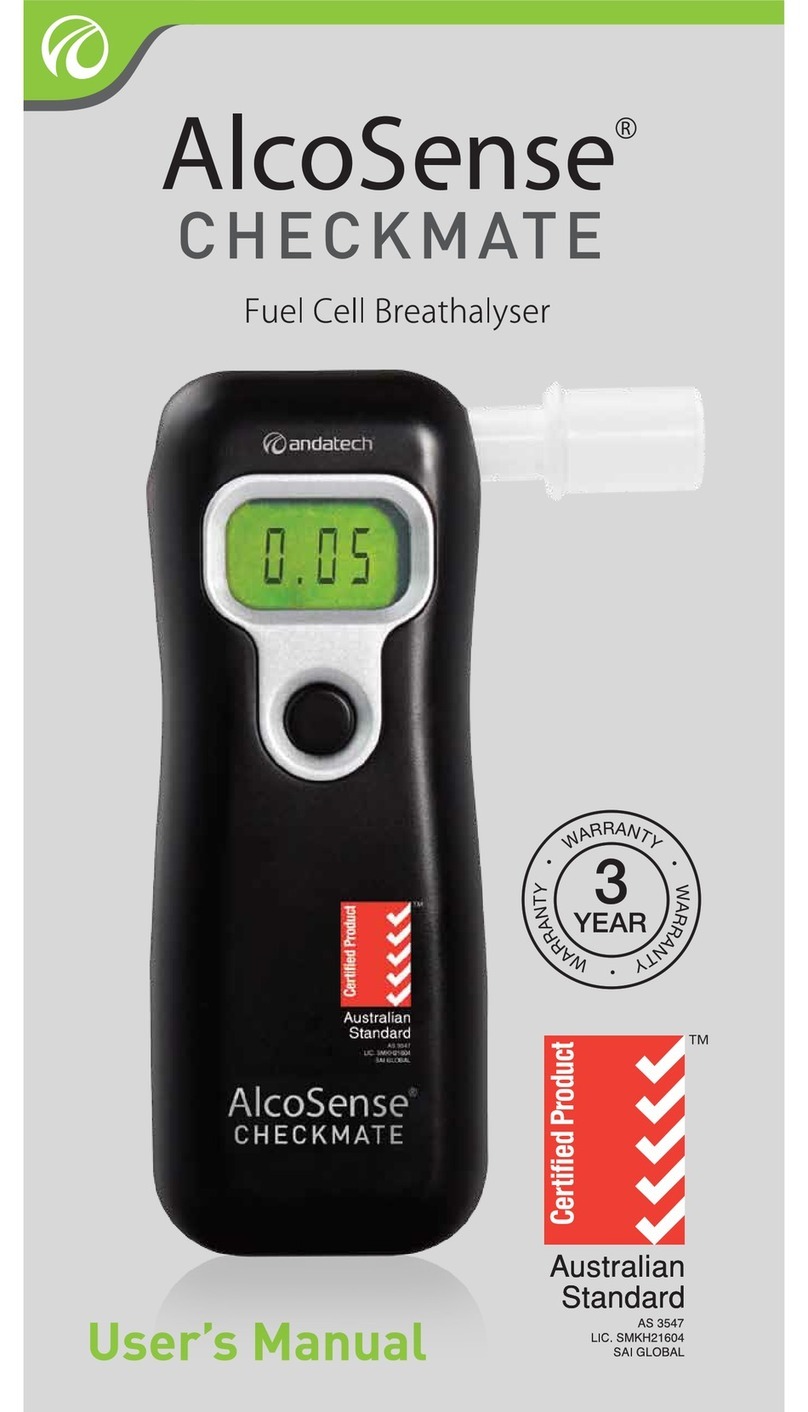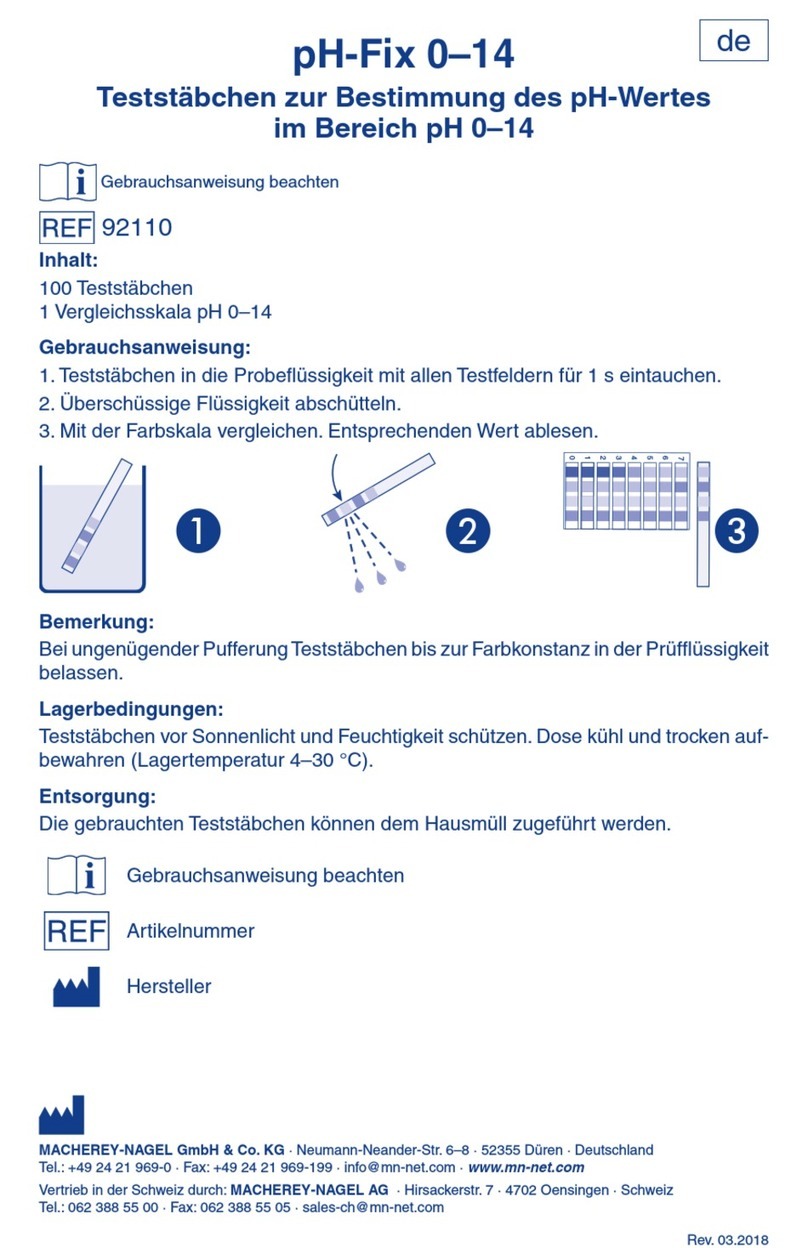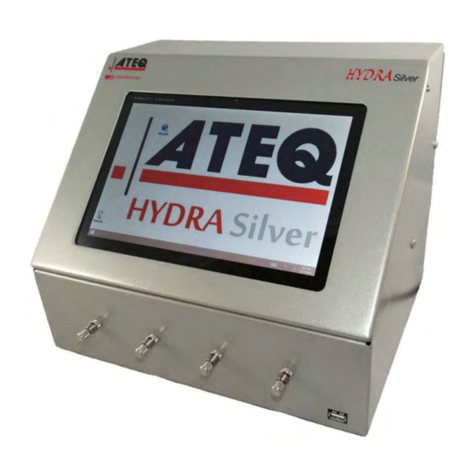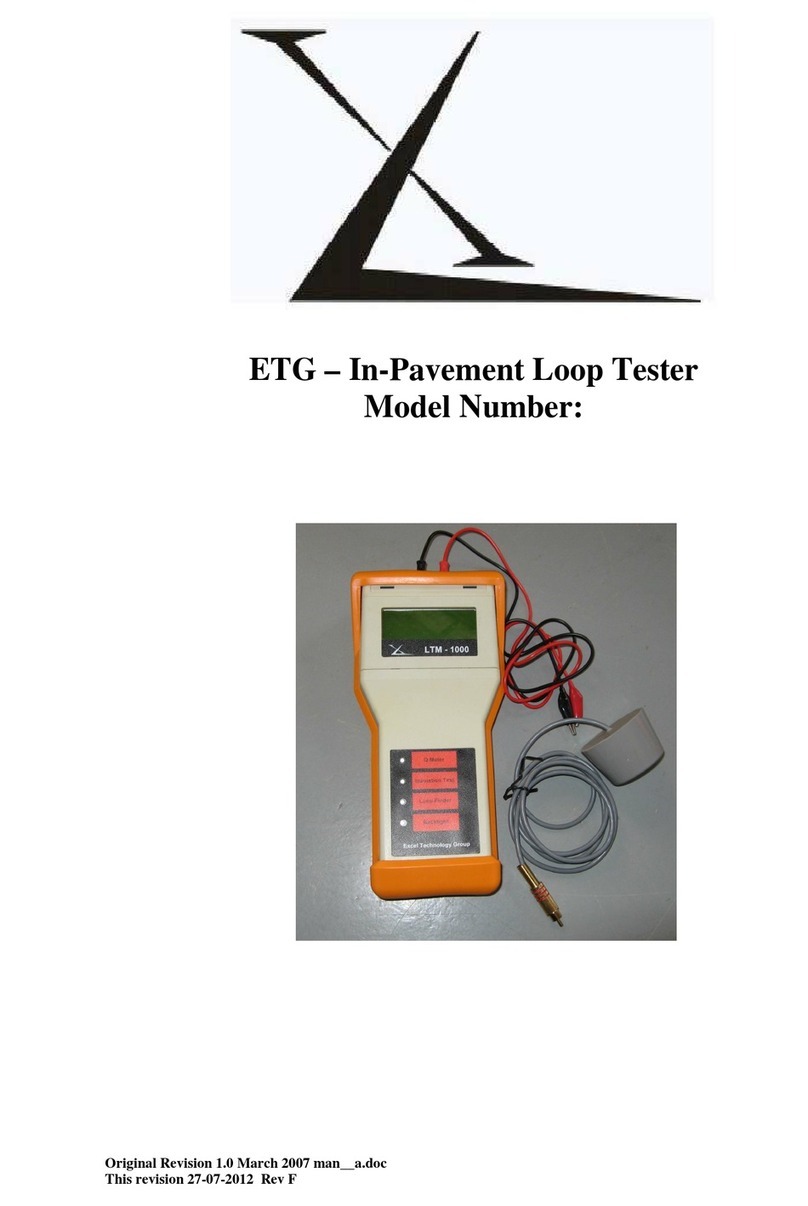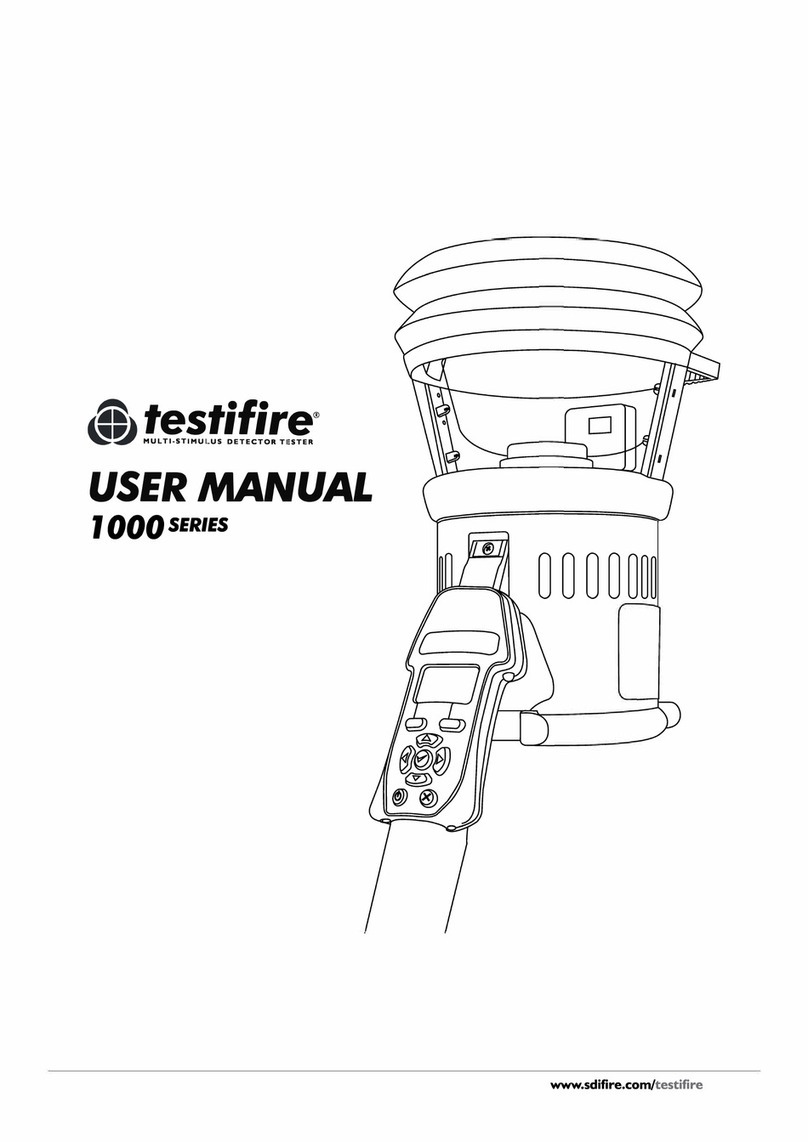Hazet 4810C Manual

Refraktometer:
Optischer Frostschutz-
und Batteriesäureprüfer
mit AdBlue®-Beurteilung
Refractometer: Anti-freeze and battery acid tester
incl. AdBlue®quality test
Réfractomètre: Testeur d’antigel et d’acide de batterie
avec évaluation AdBlue®
Rifrattometro per protezione antigelo e acido delle
batterie con metodo di valutazione AdBlue®
Refractómetro con evaluación del AdBlue®para la
comprobación del anticongelante y del ácido de la batería
Refractometer voor de beoordeling van antivries
en accuzuur met behulp van AdBlue®
gb
fr
it
es
nl
HAZET 4810C
mit LED-Beleuchtung
with LED-lighting
avec éclairage LED
con illuminazione a LED
con iluminación LED
met LED-verlichting

A B C D
5
3 4
1
Hinweis: AdBlue®ist eine eingetragene Marke des VDA, Verband
der Deutschen Automobilindustrie e.V.
Note: AdBlue®is a registered Trade Mark of the VDA, German
Association of the Automobile Industry.
Remarque: AdBlue®est une marque déposée de la VDA,
Association allemande de l’industrie automobile.
Nota: AdBlue®è un marchio registrato della VDA (Associazione
dell‘industria Automobilistica Tedesca), associazione registrata.
Nota: AdBlue®es una marca registrada de VDA, Asociación
Alemana de la Industria Automotriz.
Aanwijzing: AdBlue®is een geregistreerd handelsmerk van VDA,
de Duitse Vereniging van de auto-industrie vzw.
2
°Celsius °Fahrenheit
- 10 °C + 14 °F
- 15 °C + 5 °F
- 20 °C - 4 °F
- 25 °C - 13 °F
- 30 °C - 22 °F
- 35 °C - 31 °F
- 40 °C - 40 °F
- 45 °C - 49 °F
°Fahrenheit = °Celsius x 1,8 + 32
554668/10.13
C1 C2

REFRAKTOMETER: FROSTSCHUTZ- UND BATTERIESÄUREPRÜFER MIT
ADBLUE®-BEURTEILUNG
• Batteriesäureprüfer Skala A
Bei der Batteriesäure wird die Säuredichte in kg/l gemessen. Die Skala A zeigt die
Bereiche für RECHARGE = nachfüllen, FAIR = akzeptabel, GOOD = gut, an.
• AdBlue®-Beurteilung Skala B
- Der Harnstoffgehalt und somit der Sollwert von AdBlue®beträgt 32,5 Gewichtsprozent
- Bei Anzeigewerten zwischen 33,2 und 31,8 Gewichtsprozent liegen diese innerhalb
der Toleranz nach ISO 22241-1
• Frostschutzprüfer Skala C (Kühlwasser)
- Kühlwasser Skala C1, Glycol (G11/G48, G12, G12+/G30, G12++/G40/G12evo/G65)
Skala C2, Glycol (G13)
- Scheibenwischwasser Skala D (Richtwert)
Das Gerät hat eine Anzeige, aufgeteilt in 3 separate Skalen, auf denen der Wert für jede Flüssigkeit ablesbar ist
(siehe Abb.).
Vorsicht beim Test der Batteriesäure; Säure darf nicht mit Augen und Haut in Berührung
kommen – gesundheitsschädlich. Nach jedem Prüfvorgang das Prisma mit klarem Wasser
reinigen und mit weichem Tuch trocknen!
• Prüfvorgang:
- Prüfen, ob Prisma (3) und Klappe (4) am Messgerät sauber sind.
- Mit beigelegter Pipette einen Tropfen von der zu prüfenden Flüssigkeit auf das Prisma (3) geben.
- Klappe (4) schließen damit Tropfen verteilt wird.
- Okular (1) durch Drehen auf Sehschärfe einstellen.
- Wert auf entsprechender Skala ablesen – es erscheint eine scharfe HELL-DUNKEL Trennlinie (5).
- Bei schlechten Lichtverhältnissen LED-Beleuchtung einschalten (2).
- Nach Beendigung des Prüfvorgangs Prisma mit trockenem Tuch reinigen.
Anmerkung: Bei dem Ergebnis der Scheibenwischwasserprüfung handelt es sich um einen Mittelwert verschie-
dener, auf Alkoholbasis zusammengestellter Frostschutzmittel, da die Flüssigkeiten in Ihrer Zusammensetzung
unterschiedlich sind. Das Gerät kann mit destilliertem Wasser auf seine Anzeigegenauigkeit überprüft werden. Die
HELL-DUNKEL Trennlinie muss mit der Wasserlinie (WATERLINE) übereinstimmen.
Bei Abweichungen übergeben Sie das Gerät Ihrem Händler oder dem Hersteller direkt.
Gebrauchsanleitung
de
Technische Änderungen vorbehalten 02/20
A B C D
C1 C2

REFRACTOMETER FOR TESTING RADIATOR COOLANT, WINDSHIELD
WASHER FLUID, BATTERY ACID AND THE QUALITY OF ADBLUE®
• Battery acid tester scale A
The scale indicates the density of the battery acid in kg per litre.
Scale A indicates the ranges for RECHARGE, FAIR and GOOD.
• AdBlue®Evaluation scale B
- The urea concentration of AdBlue®is 32.5 % by weight
- Display values between 33.2 and 31.8 % by weight are within the tolerance range
to ISO 22241-1 (observe manufacturers‘s specification)
• Anti-freeze tester scale C (Coolant)
- Coolant scala C1, glycol (G11/G48, G12, G12+/G30, G12++/G40/G12evo/G65)
scala C2, glycol (G13)
- Windscreen washer fluid scale D (guideline)
The instrument incorporates a display, subdivided into 3 scales, from which the values for the respective fluids can be
read off (see illustration).
Take particular care when testing the battery acid. Do not let it come into contact with the
eyes or skin – this could be harmful. Clean the prism with clean water und dry it with a
soft cloth after every test procedure!
• Test procedure:
- Check that the prism (3) and lid (4) of the instrument are clean.
- With the pipette supplied, place a drop of the fluid you wish to test on the prism (3).
- Close the lid (4); this will disperse the fluid.
- Turn the eyepiece (1) so that it is properly focused.
- Read off the value on the corresponding scale – a pronounced LIGHT-DARK dividing line (5) is displayed.
- In case of bad light conditions, turn on LED-lighting (2).
- On the completion of each test, carefully clean the prism with a dry cloth.
Note: Due to variations in the formulations of windscreen washer fluids, the result of this test represents an
average value for a variety of alcohol-based anti-freeze mixtures. The accuracy of the test instrument display can
be checked with distilled water. The LIGHT-DARK dividing line must coincide with the WATERLINE.
If the check reveals inaccuracies, return the instrument to your dealer or directly to the manufacturer.
Directions for use
en
We reserve the right to alter specifications without notice 02/20
A B C D
C1 C2

RÉFRACTOMÈTRE DE LA PROTECTION ANTIGEL ET DU TAUX D’ACIDITÉ
DES BATTERIES AVEC ÉVALUATION DE L‘ADBLUE®
• Contrôle du taux d’acidité des batteries Graduation A
Pour l’acide de batterie, la mesure se fait au niveau de la densité d’acide kg/l. L’échelle A
montre les secteurs de RECHARGE = recharge, FAIR = acceptable et GOOD = bon.
• Évaluation de l‘AdBlue®Graduation B
- La teneur en urée et donc la valeur de consigne d’AdBlue®se monte à 32,5 en pourcentage pondéral
- Pour des valeurs affichées de 33,2 et 31,8 en pourcentage pondéral, on a des valeurs
situées dans la zone de tolérance selon ISO 22241-1.
• Contrôle de la protection antigel Graduation C (L’eau de refroidissement)
- L’eau de refroidissement Graduation C1, glycol (G11/G48, G12, G12+/G30,
G12++/G40/G12evo/G65)
Graduation C2, glycol (G13)
- L’eau du lave-glace Graduation D (niveau de référence)
L’appareil possède un indicateur divisé en 3 graduations séparées sur lesquelles on peut lire la valeur de chaque
liquide (cf. illustration).
Attention en testant l’acide de la batterie; l’acide ne doit jamais entrer en contact avec les
yeux et la peau – risques pour la santé. Après chaque essai, nettoyez le prisme à l’eau
claire et séchez avec un chiffon doux.
• Opération de contrôle :
- Vérifier si le prisme (3) et le clapet (4) de l’appareil de mesure sont propres.
- Avec la pipette fournie,mettre une goutte du liquide à contrôler sur le prisme (3).
- Fermer le clapet (4) pour que la goutte s’étale.
- Régler la netteté de l’oculaire (1) en le tournant.
- Lire la valeur sur la graduation correspondante – une ligne de séparation nette (5) CLAIRE-FONCEE apparaît.
- Dans des conditions de faible luminosité, allumer les lumières LED (2).
- A la fin de chaque opération de contrôle, nettoyer le prisme avec précaution (avec un chiffon sec).
Remarque: Pour le résultat du contrôle de l’eau de lave-glace, il s’agit d’une valeur moyenne basée sur
différents produits antigel à base d’alcool, du fait que les liquides sont une composition différente. L’exactitude
d’affichage de l’appareil peut être vérifiée avec de l’eau distillée. La ligne de séparation CLAIR-SOMBRE doit
correspondre à la ligne d’eau (WATERLINE).
En cas de déviations, donner l’appareil à votre vendeur ou directement au fabricant.
Mode d’emploi
fr
Sous réserve de modifications techniques 02/20
A B C D
C1 C2

RIFRATTOMETRO PER PROTEZIONE ANTIGELO E ACIDO DELLE BATTERIE
CON METODO DI VALUTAZIONE ADBLUE®
• Controllo dell’acido della batteria scala A
Per l‘acido della batteria si misura la densità in kg/l.
La scala A illustra i range per RECHARGE = carica, FAIR = accettabile e GOOD = buona.
• Valutazione AdBlue®scala B
- Il contenuto di urea e pertanto il valore nominale di AdBlue®è pari al 32,5 % del peso;
- In caso di valori indicati tra il 33,2 e il 31,8 % del peso, questi rientrano nei valori di tolleranza
in base alla normativa ISO 222241-1
• Apparecchio controllo dell’antigelo scala C (Acqua del radiatore)
- Acqua del radiatore scala C1, glicole (G11/G48, G12, G12+/G30, G12++/G40/G12evo/G65)
scala C2, glicole (G13)
- Liquido lavavetri scala D (valore indicativo)
L‘apparecchio è dotato di un indicatore, suddiviso in 3 scale separate, sulle quali si può leggere il valore di ogni
liquido (vedere figura).
Attenzione durante il controllo dell‘acido della batteria; l‘acido non deve venire a contatto
con occhi e pelle, essendo nocivo per la salute. Dopo ogni processo di verifica detergere il
prisma con acqua corrente e asciugare con un panno morbido!
• Procedimento di controllo:
- Verificare, se il prisma (3) e la valvola (4) sull‘apparecchio di misurazione sono puliti.
- Con la pipetta allegata mettere una goccia del liquido da controllare sul prisma (3).
- Chiudere la valvola (4) affinché la goccia si distribuisca regolare l‘oculare (1),
ruotandolo fino alla messa a fuoco.
- Leggere il valore sulla relativa scala – compare una linea netta di separazione CHIARO-SCURO (5).
- In condizioni di scarsa illuminazione, accendere le luci a LED (2).
- Al termine di ogni controllo si deve procedere a un‘accurata pulizia del prisma (con panno asciutto).
Avvertenza: il risultato del controllo del liquido lavavetri si riferisce a un valore medio di diversi antigeli,
su base alcolica, poiché i liquidi hanno composizione diversa. La precisione di segnalazione dell’apparecchio può
essere controllata con acqua distillata. La linea divisoria CHIARO-SCURO deve coincidere con la linea d’acqua
(WATERLINE).
In caso di irregolarità consegnare l’apparecchio al proprio rivenditore o direttamente al produttore.
I Istruzioni d’uso
it
Modifiche tecniche riservate 02/20
A B C D
C1 C2

A B C D
C1 C2
REFRACTÓMETRO CON EVALUACIÓN DEL ADBLUE®PARA LA
COMPROBACIÓN DEL ANTICONGELANTE Y DEL ÁCIDO DE LA BATERÍA
• Comprobador del líquido de baterías Escala A
En la batería se mide la densidad del ácido kg/l. La escala A muestra las zonas
de RECHARGE = recargar, FAIR = aceptable y GOOD = bueno.
• Evaluación del AdBlue®Escala B
- El contenido de urea y, por lo tanto, el valor nominal de AdBlue®es del 32,5 % en peso.
- Si los valores se encuentran entre 33,2 y 31,8 % en peso, significa que se encuentran
dentro de la tolerancia según la norma ISO 22241-1
• Comprobador de anticongelante Escala C (Agua de refrigeración)
- Agua de refrigeración Escala C1, glicol (G11/G48, G12, G12+/G30, G12++/
G40/G12evo/G65)
Escala C2, glicol (G13)
- Agua del limpiaparabrisas Escala D (valor orientaivo)
El aparato incorpora una indicación, dividida en 3 escalas separadas, en la que se puede leer el valor para cada
líquido (ver figura).
Tenga cuidado al comprobar el ácido de la batería, que no debe entrar en contacto con los
ojos y la piel y es peligroso. ¡Después de cada prueba, limpiar el prisma con agua limpia
y a continuación secarlo con un paño suave!
• Comprobación:
- Compruebe si el prisma (3) y la tapa (4) en el medidor están limpios.
- Saque una gota del líquido a comprobar con la pipeta y deposítela sobre el prisma (3).
- Cierre la tapa (4) para que se distribuya la gota.
- Ajuste la nitidez girando el ocular (1).
- Compruebe el valor en la escala correspondiente. Aparece una clara línea de separación CLARO-OSCURO (5).
- En condiciones de poca luz, encienda la LED-iluminación (2).
- Después de cada comprobación debe limpiarse con cuidado el prisma (con un trapo seco).
Advertencia: el valor de comprobación del agua del limpiaparabrisas es un valor medio de diversos anticon-
gelantes, compuestos sobre base de alcohol, ya que los líquidos tienen una composición diferente. Se puede
comprobar la precisión del aparato con agua destilada. La línea de separación entre CLARO-OSCURO debe coincidir
con la línea de agua (WATERLINE).
En caso de diferencias entregue el aparato a su proveedor o directamente al fabricante.
Instrucciones para el uso
es
Salvo modificaciones técnicas 02/20

REFRACTOMETER VOOR DE BEOORDELING VAN ANTIVRIES EN
ACCUZUUR MET BEHULP VAN ADBLUE®
• Controle accuzuur schaalverdeling A
Bij het accuzuur wordt de zuurdichtheid gemeten in kg/ltr. Op de schaalverdeling A ziet
u de bereiken voor RECHARGE = opladen, FAIR = acceptabel en GOOD = goed.
• AdBlue®-beoordeling schaalverdeling B
- Het ureumgehalte en dus de nominale waarde van AdBlue®bedraagt 32,5 gewichts%
- Bij geïndiceerde waarden tussen 33,2 en 31,8 gewichts% liggen de waarden binnen
de tolerantiegrenzen volgens ISO 22241-1.
• Controle antivries schaalverdeling C (het koelwater)
- het koelwater Skala C1, glycol (G11/G48, G12, G12+/G30, G12++/G40/G12evo/G65)
Skala C2, glycol (G13)
- het ruitesproeierwater schaalverdeling D (richtwaarde)
Het apparaat beschikt over een indicatie die bestaat uit 3 aparte schaalverdelingen. Daarop kunt u voor elke
vloeistof de waarde aflezen (zie de afbeelding).
Wees voorzichtig bij het testen van accuzuur; zuur mag niet in de ogen terechtkomen
of met de huid in aanraking komen – gevaarlijk voor de gezondheid. Reinig na elke test
het prisma met helder water reinigen en droog het met een zachte doek!
• Controle:
- Controleer of het prisma (3) en de klep (4) van het meetapparaat schoon zijn.
- Breng met het meegeleverde pipet een druppel van de te controleren vloeistof op het prisma (3) aan.
- Sluit de klep (4) zodat de druppel wordt verdeeld.
- Draai aan het oculair (1) om het op de juiste scherpte in te stellen
- Lees de waarde op de betreffende schaalverdeling af -
er verschijnt een scherpe scheidingslijn (5) LICHT-DONKER.
- Bij weinig licht, LED-lichten inschatten (2).
- Na afloop van elke controle dient u het prisma altijd zorvuldig (met een droge doek) schoon te maken.
Opmerking: Aangezien de vloeistoffen qua samenstelling van elkaar verschillen, is het resultaat van de controle
van het ruitesproeierwater een gemiddeld genomen waarde van verschillende, op alcoholbasis samengestelde
soorten anti-vriesmiddelen. De indicatieprecizie van het apparaat kan worden gecontroleerd met behulp van
gedestilleerd water. De scheidingslijn voor LICHT-DONKER mit overeenstemmen met de waterlijn (WATERLINE).
Geef het apparaat in geval van afwijkingen aan uw dealer of stuur het direct aan de fabrikant.
Gebruiksaanwijzing
nl
Technische wijzigingen voorbehouden 02/20
A B C D
C1 C2

Instructions on battery disposal english
Instructions concernant l’élimination des batteries français
Avvertenze per lo smaltimento delle batterie italiano
Normas para la eliminación de las baterías español
Instructie voor de afvalverwijdering van batterijen nederlands
Hinweis zur Entsorgung von Batterien deutsch

dt
Hinweise zur Batterieentsorgung
Dieses Produkt enthält eine Batterie.
Wir sind verpflichtet, Sie auf Folgendes hinzuweisen:
Sie als Verbraucher sind gesetzlich dazu verpflichtet,
gebrauchte Batterien an entsprechenden Sammelstellen
zurück zu geben, damit Batterien nicht in den Hausmüll-
kreislauf gelangen!
Sie können gebrauchte Batterien z.B. bei kommunalen
Sammelstellen oder im Handel unentgeltlich zurückgeben.
Die auf den Batterien abgebildeten Symbole
haben folgende Bedeutung:
Batterie darf nicht in den Hausmüll gegeben werden
Cd = Cadmium Hg = Quecksilber Pb = Blei
Cd = Batterie enthält mehr als 0,002 Masseprozent Cadmium
Hg = Batterie enthält mehr als 0,0005 Masseprozent Quecksilber
Pb = Batterie enthält mehr als 0,004 Masseprozent Blei
en
Instructions on battery disposal
This product includes a battery.
We are obligated to point out the following to you:
As a consumer, you are obligated to law to return used
batteries to the appropriate collection centres so that
batteries are not placed into the household rubbish!
You can return used batteries, for example, to municipal
collection centres or return them to retail stores at no
charge.
The symbols shown on the batteries
have the following meaning:
The battery may not be place into the household rubbish
Cd = Cadmium Hg = Mercury Pb = Lead
Cd = Battery includes more than 0.002 weight percent cadmium
Hg = Battery includes more than 0.0005 weight percent mercury
Pb = Battery includes more than 0.004 weight percent lead

fr
Instructions concernant l’élimination des batteries
Ce produit contient une batterie.
Nous sommes tenus de vous signaler ce qui suit: En
tant que consommateur, la loi vous oblige de déposer
les batteries usagées aux centres de collecte requis afin
que les batteries n’entrent pas dans le cycle des déchets
ménagers!
Vous pouvez déposer gratuitement les batteries par ex.
aux centres de collecte communaux ou dans le commerce
Les symboles figurant sur les batteries ont les signifi-
cations suivantes
La batterie ne doit pas être jetée avec les déchets ménagers
Cd = Cadmium Hg = Mercure Pb = Plomb
Cd = la teneur de la batterie en cadmium est supérieure à 0,002 pour cent en poids
Hg = la teneur de la batterie en mercure est de plus 0,0005 pour cent en poids
Pb = la teneur de la batterie en plomb est supérieure à 0,004 pour cent en poids
it
Avvertenze per lo smaltimento delle batterie
Il prodotto contiene una batteria.
Siamo obbligati per legge a fornire le seguenti avvertenze:
La legge impone al consumatore di riconsegnare. Le
batterie esauste presso i centri di raccolta preposti, in
modo che le batterie non vengano smaltite nel circuito
dei rifiuti domestici!
È possibile consegnare le batterie scariche ad es. presso
punti di Raccolta comunali o presso il punto vendita
gratuitamente.
Di seguito il significato dei simboli riportati sulle batterie:
È vietato gettare la batteria tra i rifiuti domestici
Cd = cadmio Hg = mercurio Pb = piombo
Cd = la batteria contiene una frazione massica di cadmio superiore allo 0,002
Hg = la batteria contiene una frazione massica di mercurio superiore allo 0,0005
Pb = la batteria contiene una frazione massica di piombo superiore allo 0,004

es
Normas para la eliminación de las baterías
Este producto contiene una batería.
Nosotros estamos obligados a comunicarle lo siguiente:
¡Usted como consumidor está legalmente obligado a
eliminar las baterías usadas en los correspondientes
puntos de recogida, con el fin de que las baterías no sean
desechadas conjuntamente con los residuos domésticos
normales!
Usted puede desechar las baterías usadas ya sea en los
correspondientes puntos de recogida de su municipio o
entregarlas gratuitamente a un comercio especializado.
Los símbolos representados en las baterías tienen los
siguientes significados:
La batería no debe eliminarse conjuntamente con los
residuos domésticos normales.
Cd = cadmio) Hg = mercurio Pb = plomo
Cd = la batería contiene más de un 0,002 por ciento de masa de cadmio
Hg = la batería contiene más de un 0,0005 por ciento de masa de mercurio
Pb = la batería contiene más de un 0,004 por ciento de masa de plomo
nl
Aanwijzingen voor het verwijderen van batterijen
Dit product bevat een batterij.
Wij zijn verplicht u op het volgende opmerkzaam te maken:
U als gebruiker bent wettelijke verplicht, Gebruikte
batterijen op de daartoe bestemde inzamelplaatsen.
Weer in te leveren, zodat batterijen niet in het circuit van
het huisvuil terecht komen!
U kunt bv. gebruikte batterijen bij gemeentelijke
Inzamelplaatsen of in de handel gratis inleveren
De symbolen die op de batterijen zijn afgebeeld
hebben de volgende betekenis:
Oude batterijen mogen niet bij met het huisvuil
meegegeven worden
Cd = cadmium Hg = kwik Pb = lood
Cd = batterij meer dan 0,002 massa-percentage cadmium
Hg = batterij meer dan 0.0005 massa-percentage kwik
Pb = batterij meer dan 0.004 massa-percentage lood
Table of contents
Languages:
Other Hazet Test Equipment manuals
Popular Test Equipment manuals by other brands
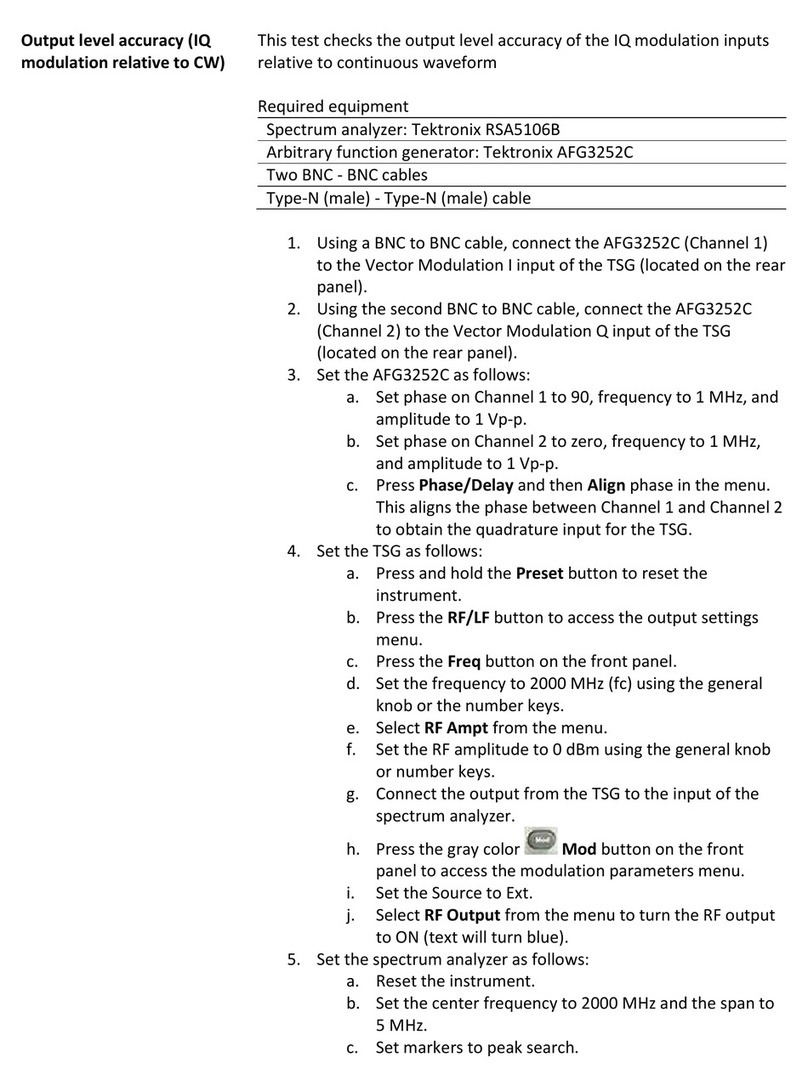
Tektronix
Tektronix TSG4100A Series quick start guide
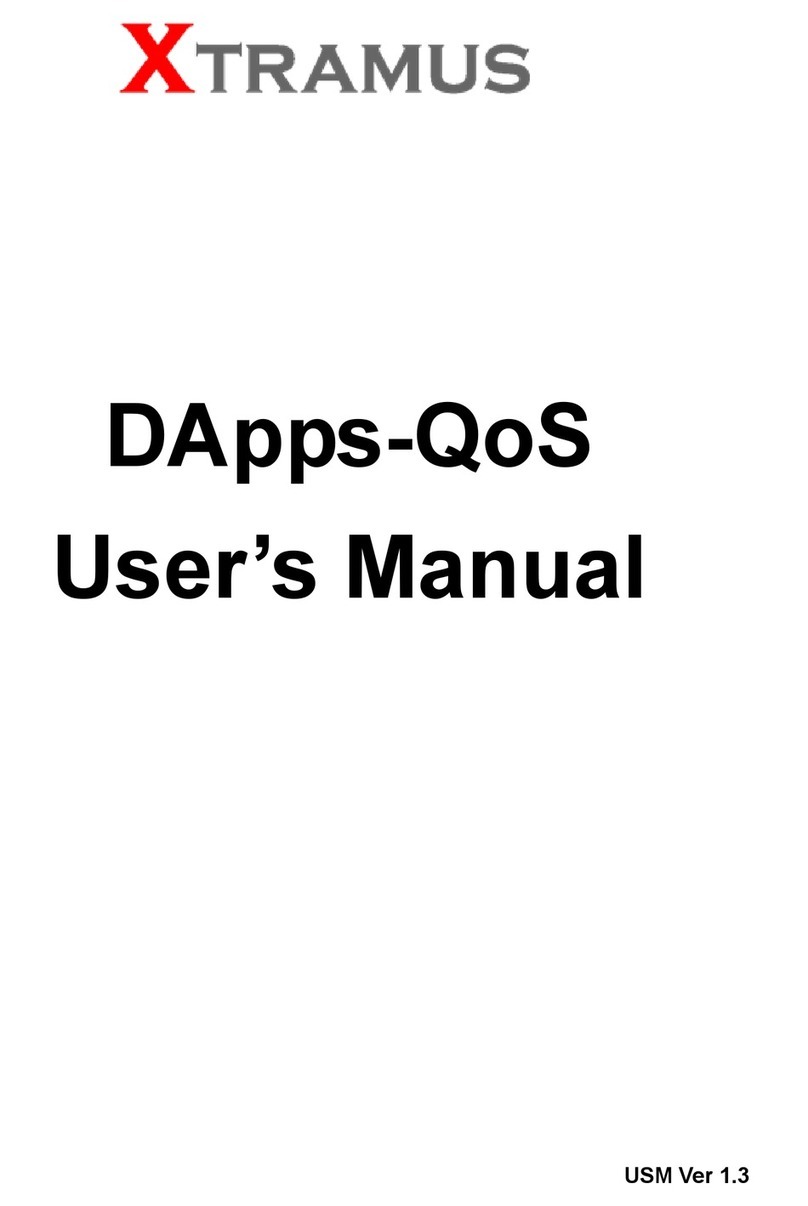
Xtramus
Xtramus DApps-QoS user manual
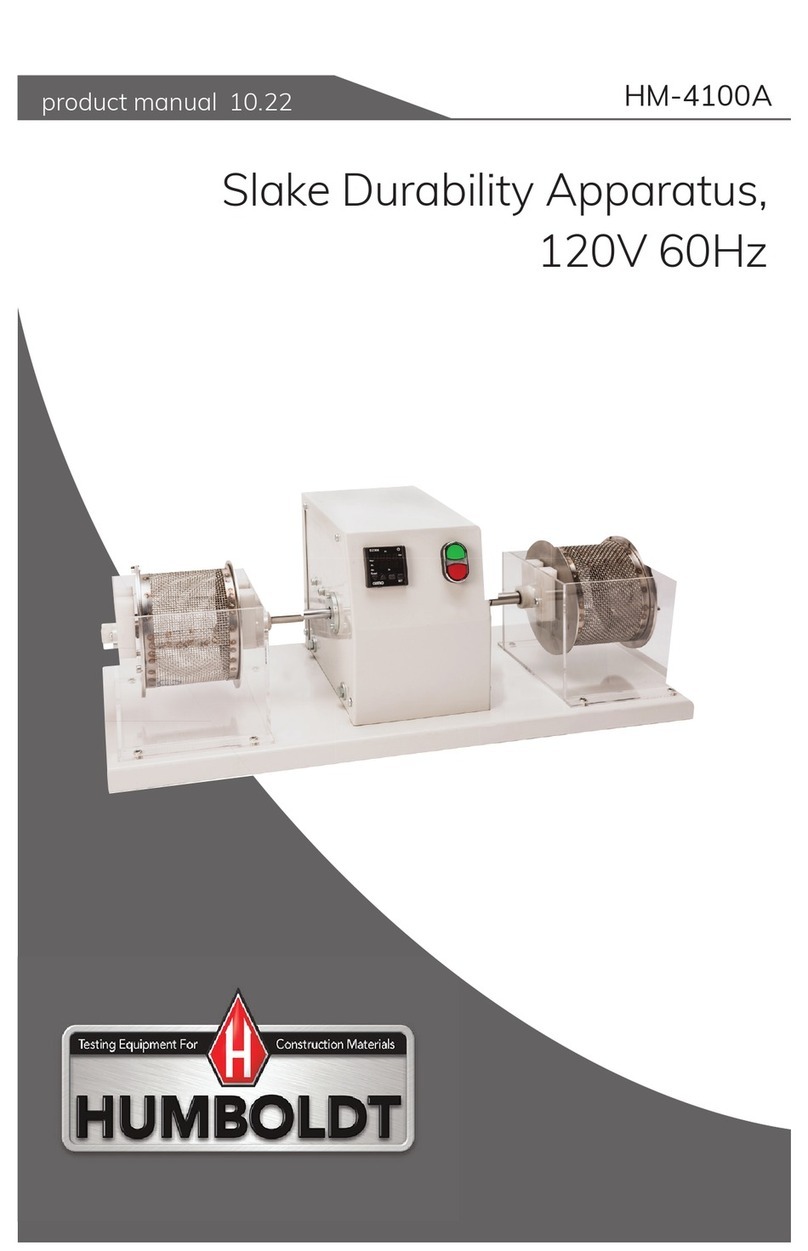
Humboldt
Humboldt HM-4100A product manual
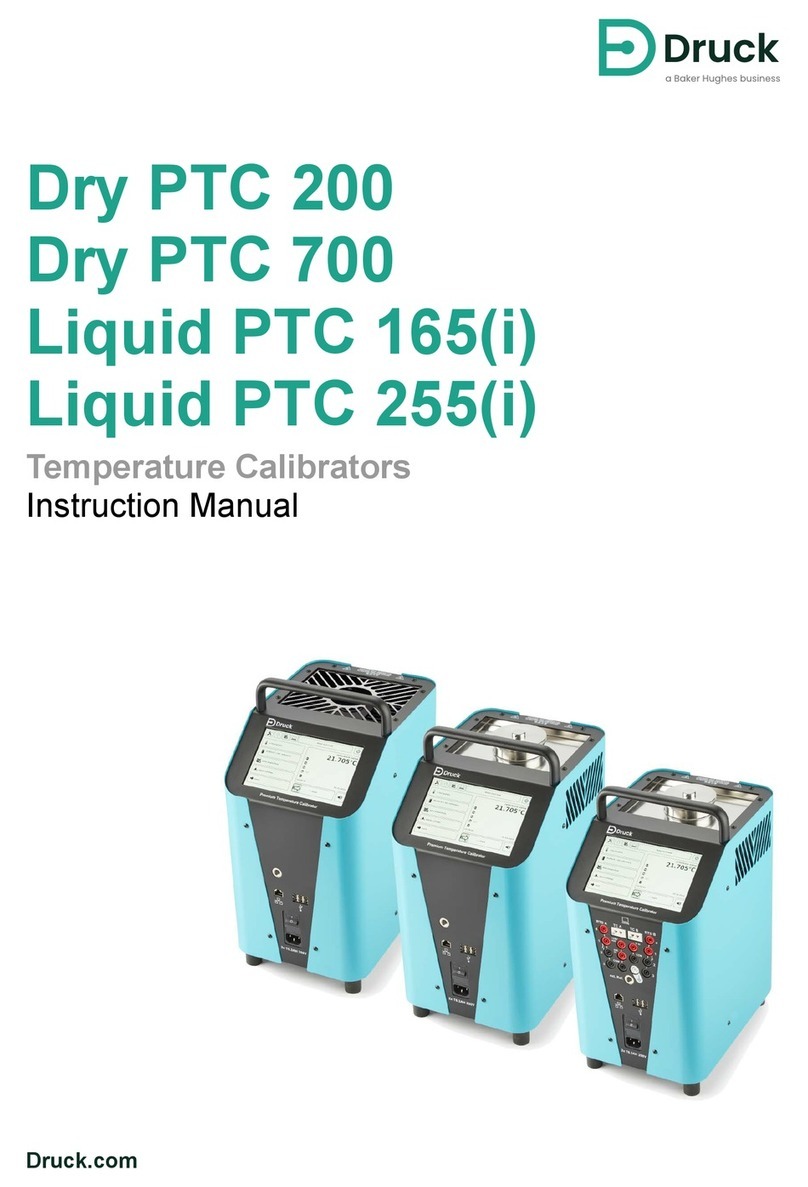
Baker Hughes
Baker Hughes Druck Dry PTC 200 instruction manual
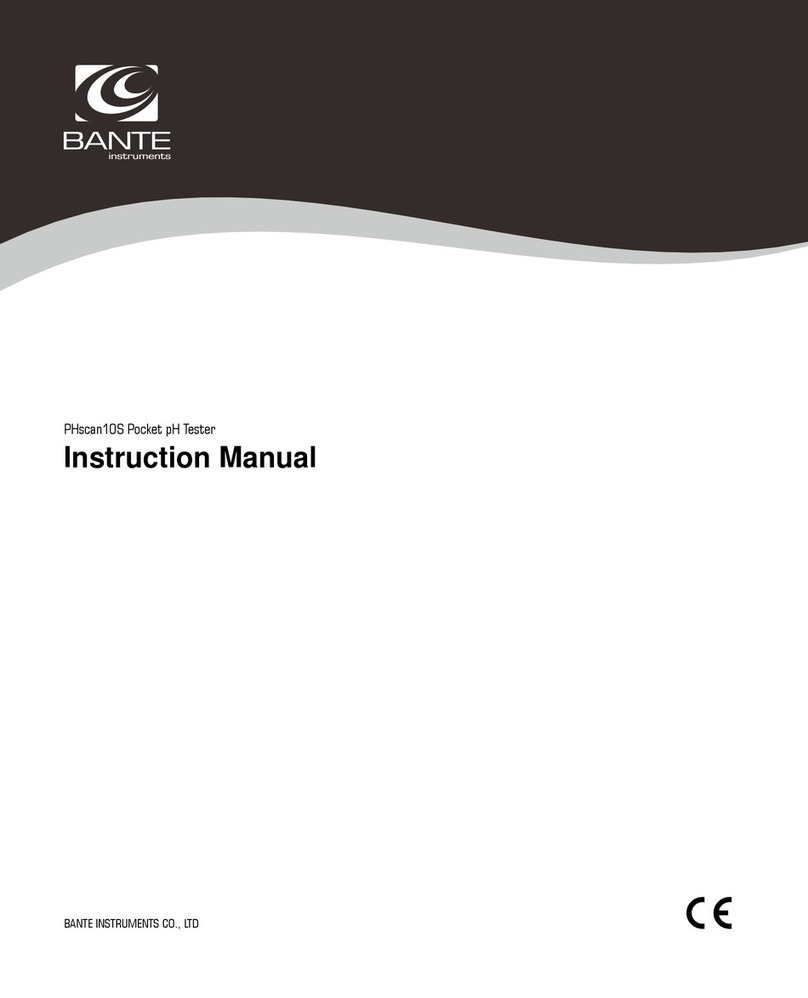
Bante Instruments
Bante Instruments PHscan10S instruction manual
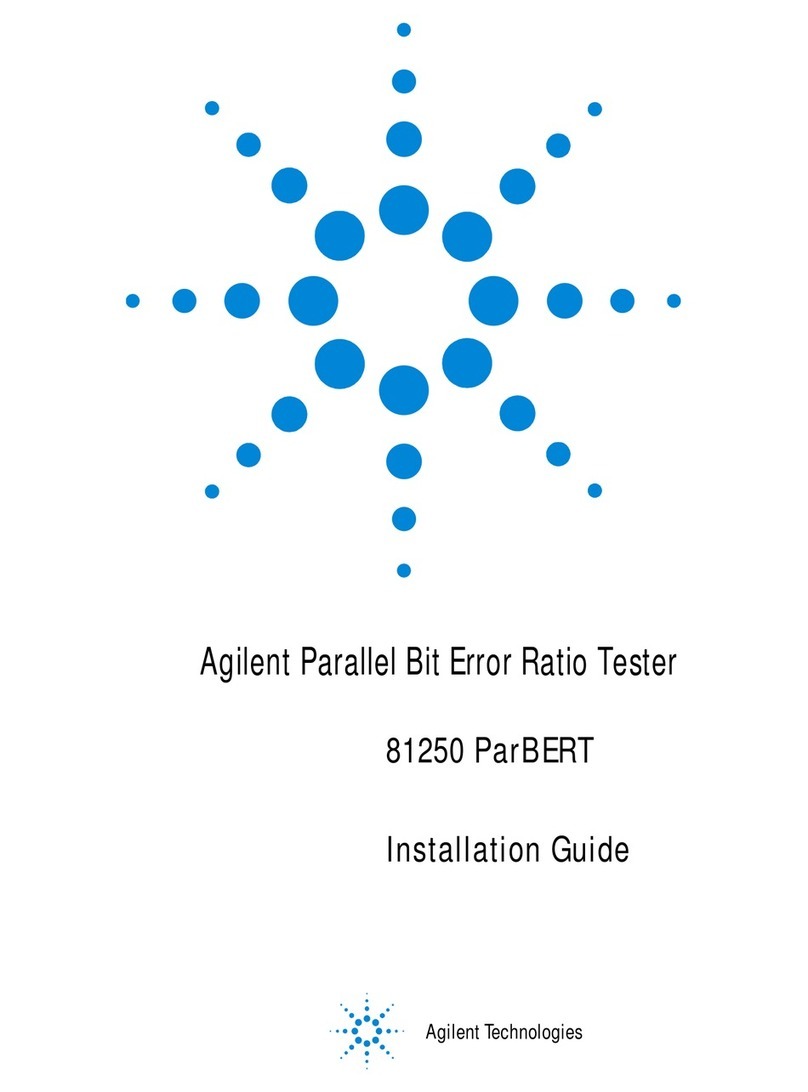
Agilent Technologies
Agilent Technologies 81250 installation guide
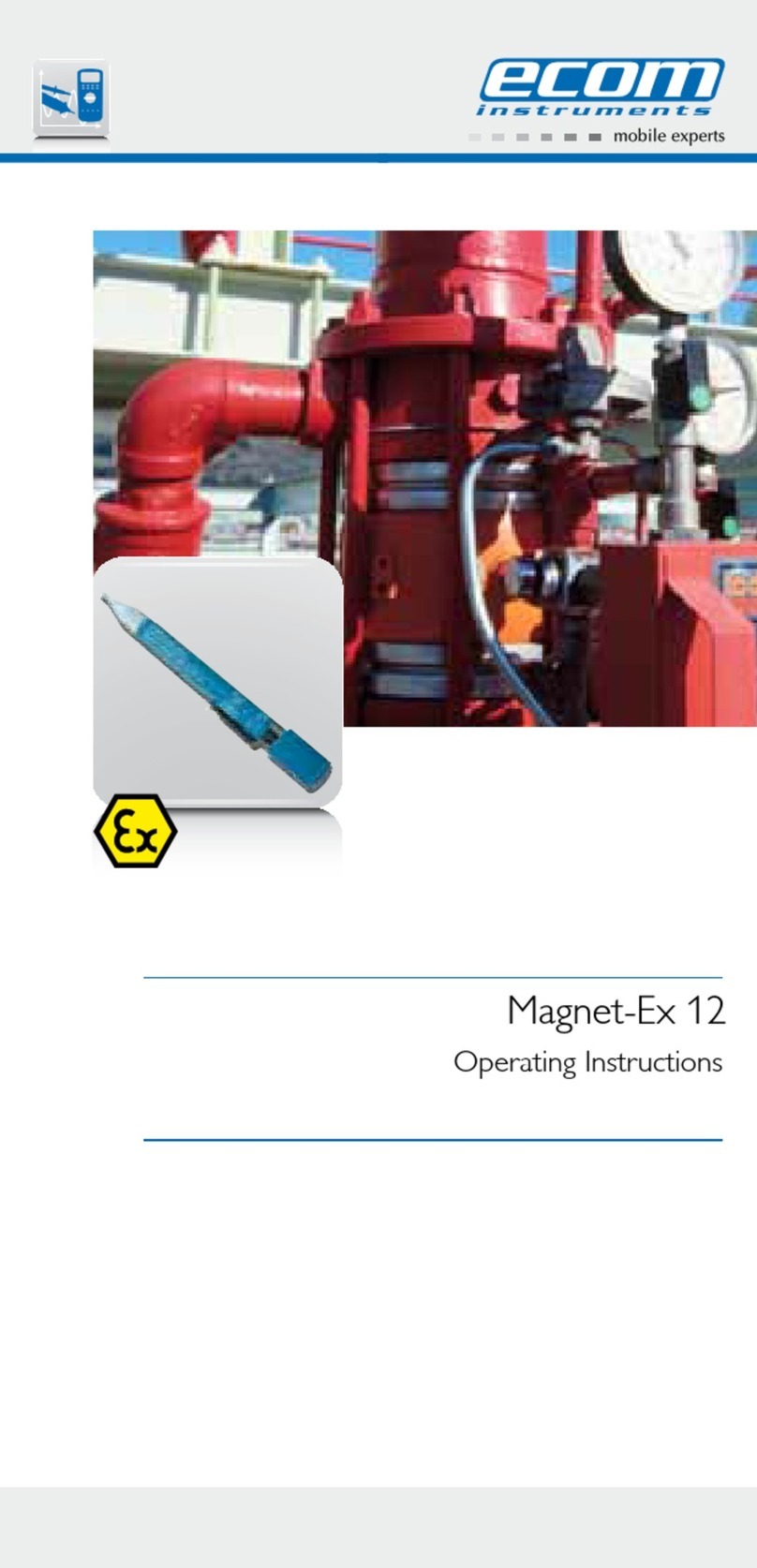
Ecom Instruments
Ecom Instruments Magnet-Ex 12 operating instructions
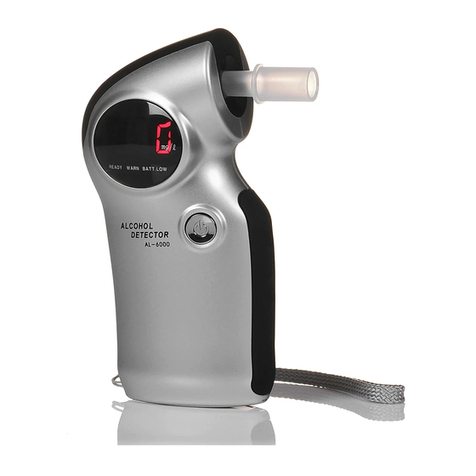
AlcoMate
AlcoMate AL6000 user manual
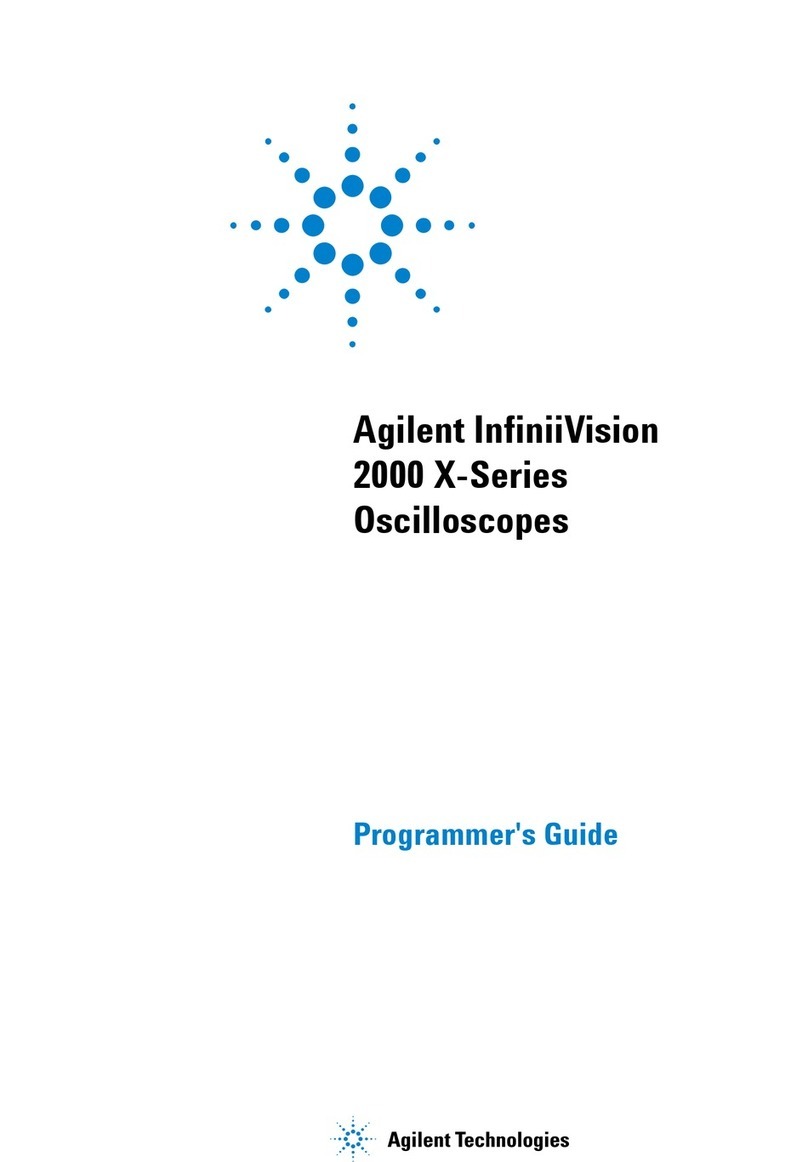
Agilent Technologies
Agilent Technologies InfiniiVision 2000 X-Series Programmer's guide

Tektronix
Tektronix 321 A instruction manual
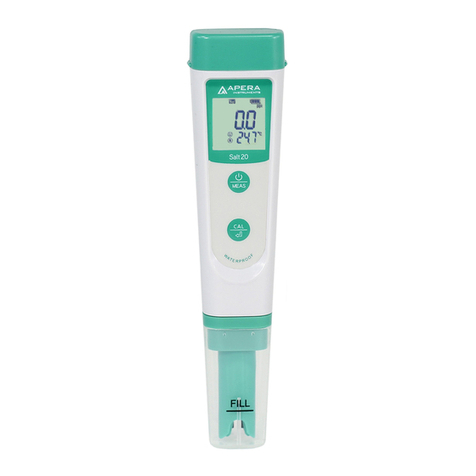
Apera Instruments
Apera Instruments Salt20 instruction manual
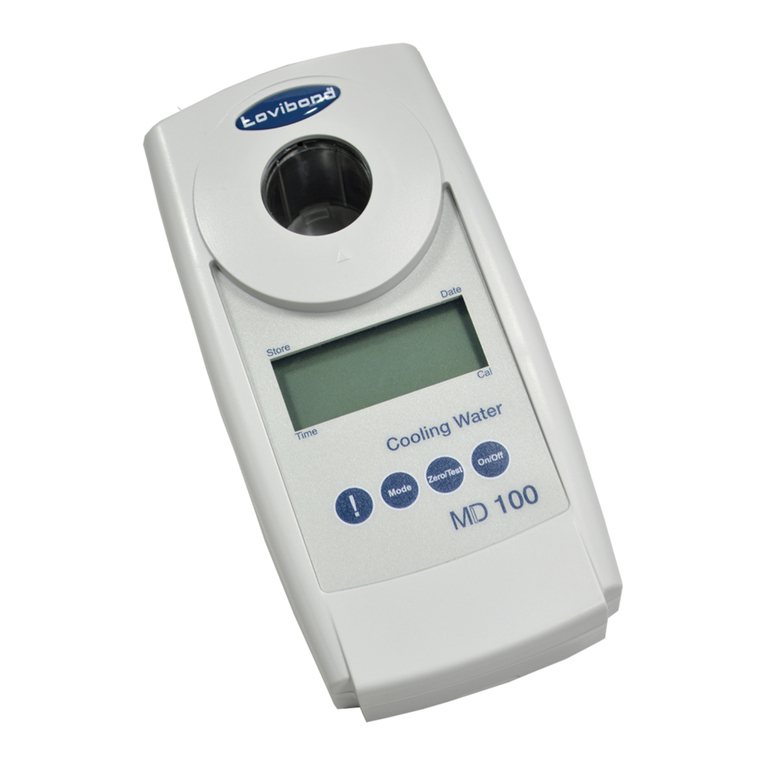
Tintometer
Tintometer Lovibond MD100 Manual of Methods


